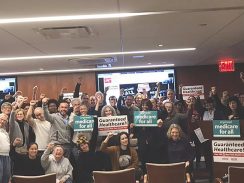
By Ananth Sampathkumar
Partner NDNY Architecture + Design
New York is going through an architectural renaissance right now. The most famous architects from around the world are designing bespoke buildings and infrastructure for the city. The new designs range from museums to skyscrapers and even waterfront piers.
The West Village has benefited from the signature building boom on the residential side. Developers have hired famous architects to design condominiums around the neighborhood. One of the first prominent “starchitect”-led developments were the 173-176 Perry Street condominiums by Richard Meier. Completed in 2002, the buildings set a new standard for luxury in residential architectural design.
Since then a whole host of high end projects have been realized. Herzog & de Meuron, the famed Swiss duo, completed 160 Leroy Street, which features a curved concrete and glass façade. Robert Stern’s Superior Ink includes 67 apartments and seven townhouses that straddle the West Side Highway between West 12th Street and Bethune Street. The British architect David Chipperfield is designing a new condominium at 11 Jane Street that houses seven residences; the building is currently under construction. Kohn Pederson Fox (KPF) Associates’ 1 Jackson Square sits on a prominent site at the intersection of Greenwich Avenue and 8th Avenue and features 30 unique residences and a flowing glass façade.
At a time when the city needs more affordable housing, these developments are a stark reminder of why New York’s housing crisis is such an intractable issue. A visual inspection at dusk suggests that at least half of these high-end apartments might be pied-à-terres, or second homes. The 2017 New York City Housing and Vacancy Survey listed the number of “Occasional, Seasonal or Recreational” apartments at just under 75,000, a 36 percent jump from 2014.
In 2014 Senator Brad Hoylman proposed a pied-à-terre tax. If the bill passes it could generate upwards of $600 million in additional revenue for New York with only a modest taxation plan on non-primary residences. The tax would also discourage such holdings and force owners to consider renting or selling their additional properties.
Alec Schierenbeck published a great piece in July 2018 on cityandstateny.com titled “A pied-a-terre tax is smart policy—and it’s constitutional.” The article makes a compelling case for implementing such a tax. New York’s outdated property tax system results in new developments being assessed at a fraction of their real worth. Property taxes account for the largest slice of revenue generation, so the archaic laws are depriving New York of much needed capital that could be invested in roads, subways and other failing infrastructure.
A neighborhood is only as good as its inhabitants. If the trend of building half-empty monuments to architecture continues, the West Village as we know it will lose its most endearing asset. Residents support local businesses and invest time and effort in keeping their neighborhoods safe and clean. As Jane Jacobs noted in her seminal book The Death and Life of Great American Cities, “You cannot rely on bringing people downtown, you have to put them there.”


